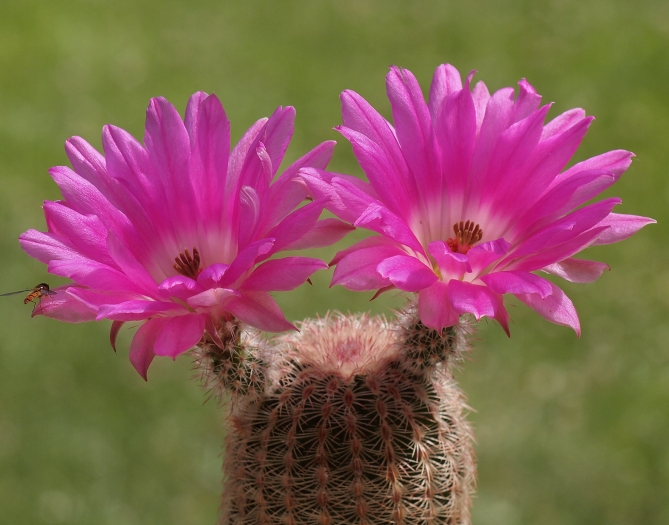Arizona Rainbow Cactus
(Echinocereus rigidissimus)
Arizona Rainbow Cactus (Echinocereus rigidissimus)
/
/

Dornenwolf
CC BY 2.0
Image By:
Dornenwolf
Recorded By:
Copyright:
CC BY 2.0
Copyright Notice:
Photo by: Dornenwolf | License Type: CC BY 2.0 | License URL: https://creativecommons.org/licenses/by-sa/2.0/ | Uploader: Dornenwolf | Publisher: Flickr |
























































Estimated Native Range
Summary
Echinocereus rigidissimus, commonly known as the Arizona Rainbow Cactus or Rainbow Hedgehog Cactus, is a slow-growing, solitary cactus that rarely branches or offsets with age. Native to the desert regions of the southwestern United States and northern Mexico, it thrives in arid environments with well-drained soils. This cactus typically reaches a height of up to 30 cm and a width of 11 cm when mature. Its cylindrical stems are covered with tightly packed, colorful spines that can range from pink to yellow, giving it a rainbow-like appearance. The Arizona Rainbow Cactus blooms in the spring, producing bright pink flowers with a white throat, which are quite showy and attract pollinators such as bees and hummingbirds.
The plant is valued for its unique, colorful spines and low-maintenance requirements, making it a popular choice for rock gardens, cactus collections, and as a potted specimen. It is well-suited for xeriscaping and can be used to add visual interest to drought-tolerant landscapes. Echinocereus rigidissimus requires minimal watering, especially during its dormant winter period, to prevent root rot. It is hardy to temperatures of −12 °C, but should be protected from prolonged freezing conditions. When grown in cultivation, it prefers a gritty, porous soil mix with good drainage and full sun to partial shade exposure. While generally pest-free, it can be susceptible to fungal diseases if overwatered or if air circulation is poor.CC BY-SA 4.0
The plant is valued for its unique, colorful spines and low-maintenance requirements, making it a popular choice for rock gardens, cactus collections, and as a potted specimen. It is well-suited for xeriscaping and can be used to add visual interest to drought-tolerant landscapes. Echinocereus rigidissimus requires minimal watering, especially during its dormant winter period, to prevent root rot. It is hardy to temperatures of −12 °C, but should be protected from prolonged freezing conditions. When grown in cultivation, it prefers a gritty, porous soil mix with good drainage and full sun to partial shade exposure. While generally pest-free, it can be susceptible to fungal diseases if overwatered or if air circulation is poor.CC BY-SA 4.0
Plant Description
- Plant Type: Succulent
- Height: 0.5-1 feet
- Width: 1-2 feet
- Growth Rate: Slow
- Flower Color: Pink
- Flowering Season: Spring, Summer
- Leaf Retention: Evergreen
Growth Requirements
- Sun: Full Sun
- Water: Low, Very Low
- Drainage: Fast
Common Uses
Bee Garden, Bird Garden, Drought Tolerant, Fire Resistant, Hummingbird Garden, Low Maintenance, Rock Garden, Showy Flowers, Street Planting
Natural Habitat
Native to desert regions of the southwestern United States and northern Mexico
Other Names
Common Names: Arizona Rainbow Cactus
Scientific Names: , Echinocereus rigidissimus,
GBIF Accepted Name: Echinocereus rigidissimus (Engelm.) Rose